The Tokyo Dome stadium, the LaQua spa, an amusement park, a variety of shops and restaurants, and the Tokyo Dome Hotel are all part of the Tokyo Dome City recreational complex in Tokyo. The amusement park was once known as Korakuen, after the historic baseball stadium, which was named after adjacent Japanese landscape garden Koishikawa Korakuen.
Continue reading to learn why Tokyo Dome City is a must-see attraction on your trip to Japan, as well as the local areas you should include in your itinerary like Tokyo Dome Stadium, LaQua, Tokyo Dome Hotel, and Koishikawa Korakuen Garden.
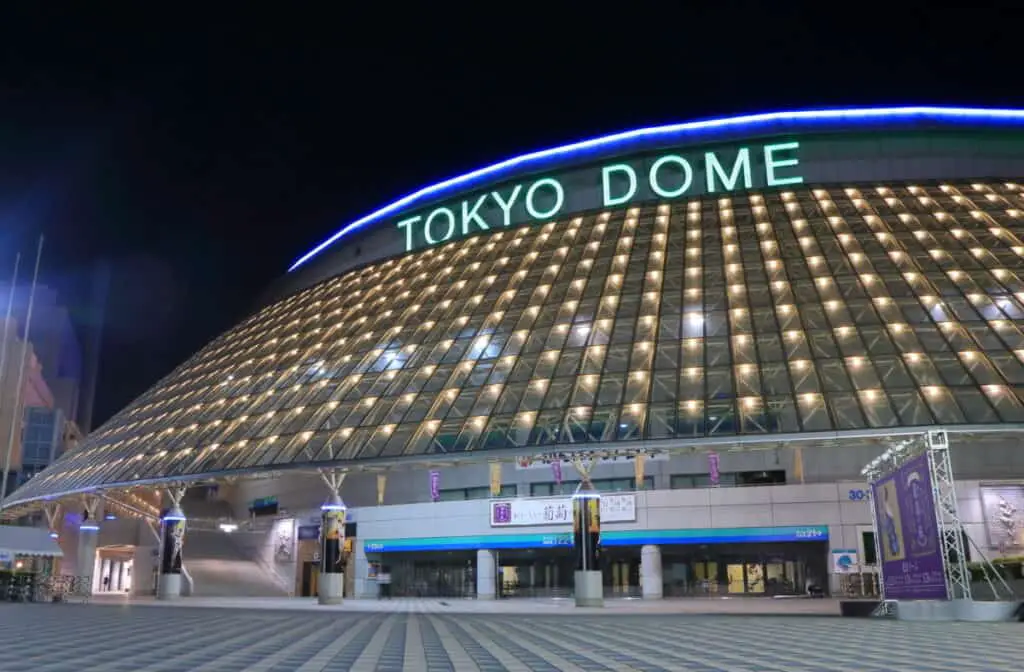
What is Tokyo Dome City?
The Bunkyo district’s Tokyo Dome City is a multi-faceted entertainment and shopping complex.
Dome City is not to be mistaken with the Tokyo Dome venue; it encompasses the entire region, including an amusement park, a stadium, a retail mall, a hotel, and even a spa.
Despite its reputation as an ideal day trip, Tokyo Dome City might easily take more than a day to visit all of the attractions.
Where is Tokyo Dome City Located?
Only the yellow local trains stop at Suidobashi Station on the JR Chuo Line, which is the best way to get to Tokyo Dome City.
Korakuen Station, which is served by the Marunouchi and Namboku Subway Lines, and the nearby Kasuga Station, which the Oedo and Mita Subway Lines serve, are also options for getting to Tokyo’s Dome City.
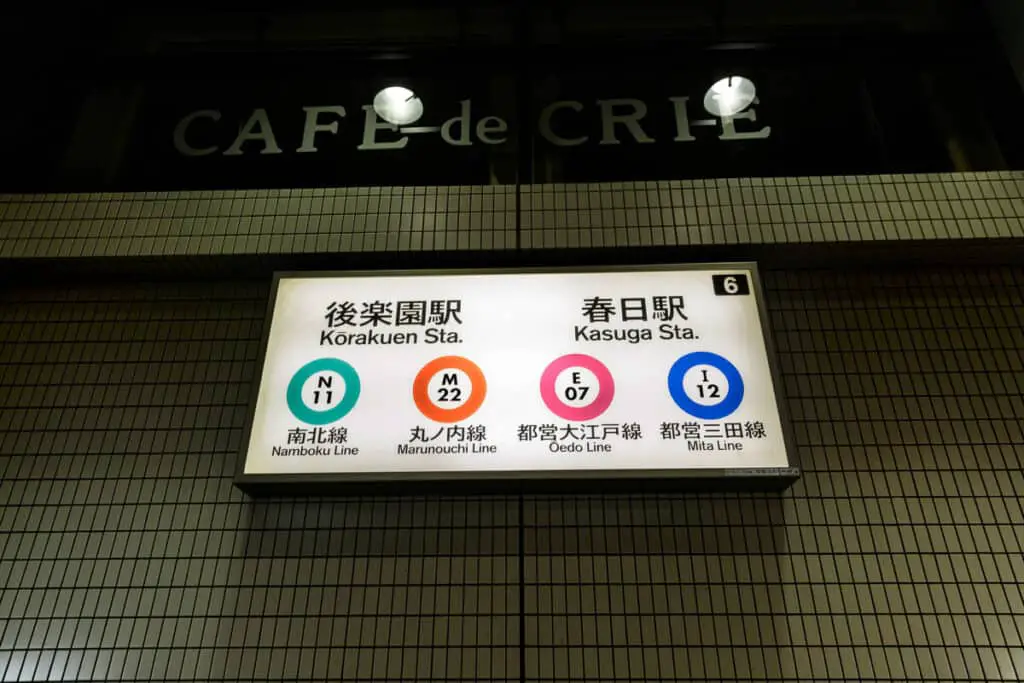
What Are the Considered the Must-See Attractions in Tokyo Dome City?
Tokyo Dome Stadium
The Tokyo Dome, located in Tokyo’s Bunkyo ward’s Koishikawa area, is Japan’s largest indoor baseball stadium, seating over 40,000 people. The Tokyo Dome is the centerpiece of the Tokyo Dome City entertainment district.
The Yomiuri Giants, Japan’s most famous baseball team, play their home games in the Tokyo Dome.
Tokyo Dome is unique among baseball stadiums in that it has a significantly broader foul zone than others, a vast number of spectator seats in the foul region, a high outfield fence of 13.9 feet, and no warning rails.
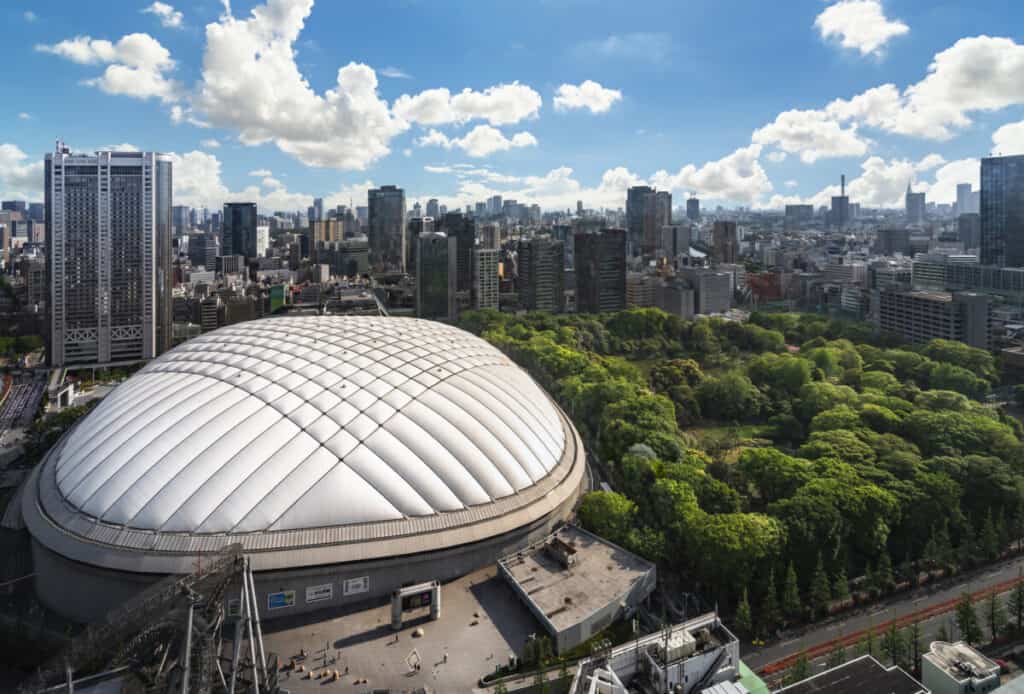
Football, basketball, pro wrestling, boxing, K-1 kickboxing, and music concerts are just a few of the sports and cultural events held at Tokyo Dome. At Tokyo Dome, international performers frequently perform.
Inside the Tokyo Dome, slightly to the right of Gate 21, lies the Baseball Hall of Fame and Museum. It is dedicated to preserving and exhibiting baseball’s history and artifacts in Japan.
LaQua
Spa LaQua is a rest and relaxation spa facility on floors 5 to 9 of a 9-story structure across from Tokyo Dome that offers the ability for you to soak in naturally hot spa water brought up from hundreds of feet beneath the city. Also available are beauty treatments, massages, and workout facilities.
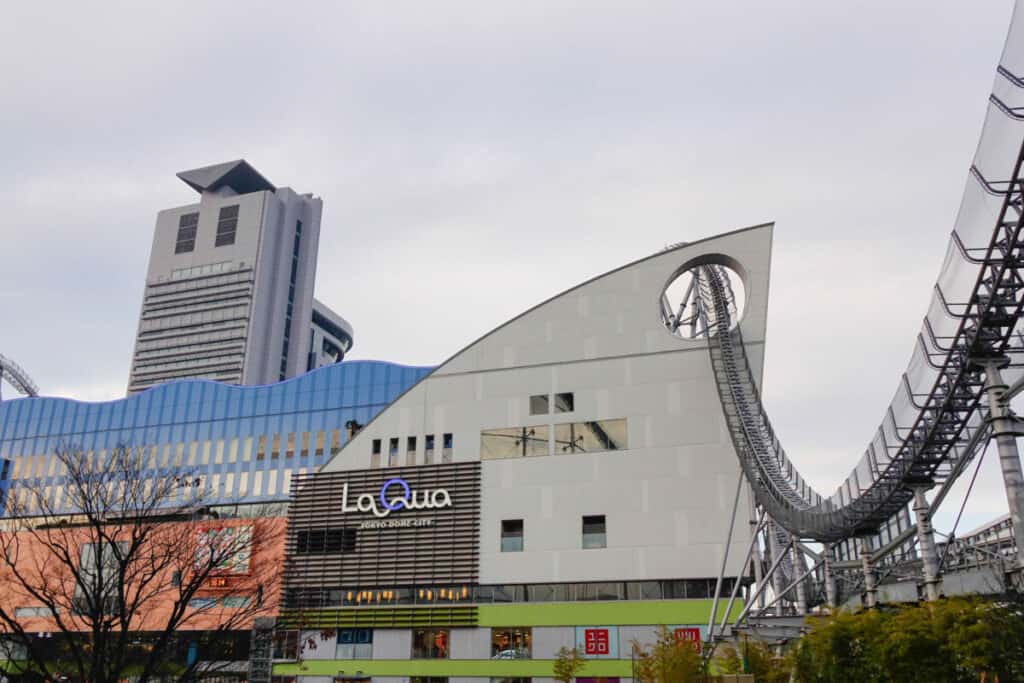
LaQua Spa is open almost around the clock, only being closed between the hours of 9 and 11 a.m. Last clients are accepted at 8 a.m., an hour before closing.
Adult admission is 2,900 yen, while children aged 6 to 17 pay 2,090 yen. However, there may be additional costs on weekends, holidays, and after midnight.
All nine levels of the building are filled with shops, cafés, and restaurants open daily, with some cafes and restaurants staying open until 11 p.m.
Tokyo Dome Hotel
Comfortable areas, trendy and inviting furnishings, and whimsical artwork, as well as breathtaking views, can be found at Tokyo Dome Hotel. Guests in the guest rooms on floors 9 to 41 may have a quiet time while watching the diverse faces of Tokyo.
The Tokyo Dome Hotel opened in June 2000 and has 43 stories and 1006 guest rooms with city views. The hotel has eleven restaurants and bars and event spaces, business centers, and recreational amenities.
Tokyo Dome Hotel Official Website
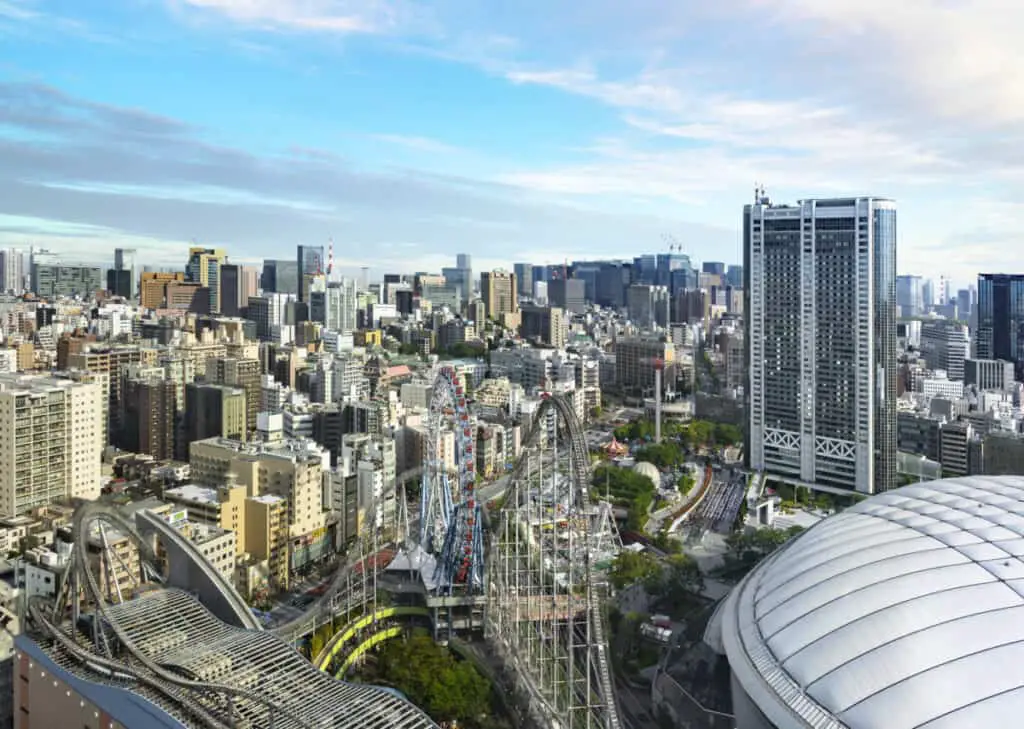
The rooms are adequate in size, many are standard-type hotel rooms. Simple ottomans, work tables, and wooden furnishings.
When staying at the hotel, tea, coffee, and water are all provided free of charge.
In ordinary rooms, you’ll discover plain porcelain worktops and shower-tub combinations. Lixil toilets are also available with a variety of behind-the-door cleaning buttons.
The Garden Pool, one of Tokyo’s few hotels with an outdoor pool, is a white-tiled sanctuary only open during the summer.
Tokyo Dome City’s Amusement Park
Tokyo Dome City offers a fully equipped amusement park on-site, in addition to a plethora of stores and eateries. Two of the park’s attractions include a thrilling roller coaster that snakes through numerous structures, as well as a large Ferris wheel.
The Tokyo Dome City Attractions section allows you to enjoy as much or as little of its 21st-century amusement park as you wish, with free admission and short lines.
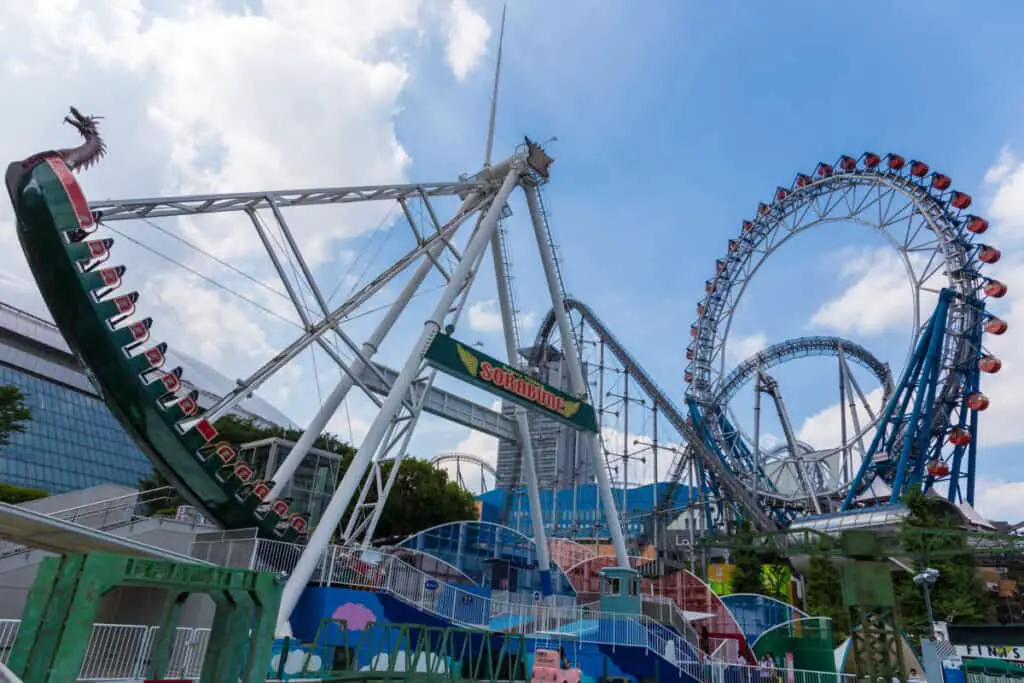
Start with the adrenaline-pumping Thunder Dolphin roller coaster, which weaves its way through a variety of buildings, including the “centerless” Big-O Ferris wheel.
There is an attraction for every age due to the sheer number of attractions. Three stories down a railway, the Wonder Drop drops into a pool of water.
Other attractions include a pirate treasure hunt on The Dive and a Lupin III-themed activity where you may team up with Inspector Zenigata to retrieve stolen treasures.
On rides like the Furifuri Grand Prix driving ride, even little toddlers may participate in the thrill.
Since you pay for each activity separately, you may spend as little as a few minutes or as much as many hours at the park. It’s ideal for families traveling to Tokyo.
Koishikawa Korakuen
The traditional Japanese garden of Koishikawa Korakuen is considered one of Tokyo’s oldest and most beautiful authentic Japanese gardens. Koishikawa Korakuen was constructed in the early Edo Period at the Tokyo house of the ruling Tokugawa family’s Mito branch.
The garden was called Korakuen after a poem encouraging a monarch to enjoy pleasure only after creating happiness for his people, similar to its namesake in Okayama. The garden is located in the area of Koishikawa.
Koishikawa Korakuen Garden Official Website
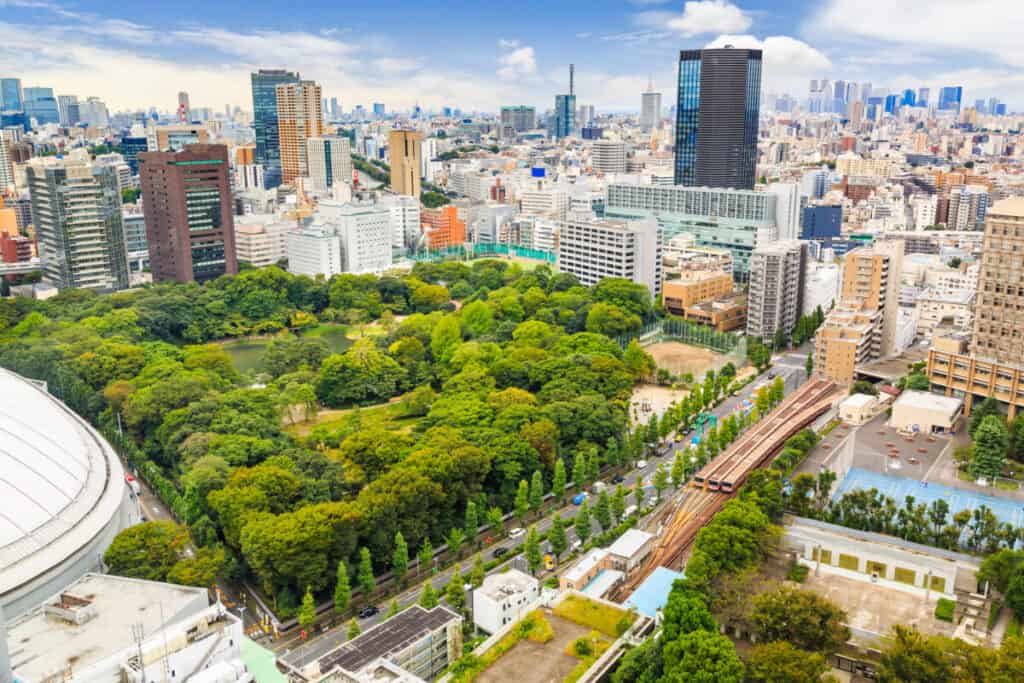
Koishikawa Korakuen, like other traditional Japanese gardens, attempts to replicate famous landscapes in miniature by using ponds, stones, trees, and manmade hills to resemble both Japanese and Chinese scenery.
Despite the relatively inconspicuous contemporary background of the Tokyo Dome and other structures in the distance.
The garden remains a stunning natural getaway from metropolitan Tokyo, thanks to a network of walking trails that wind around to specified areas from which tourists can view the garden.
Space Museum TeNQ
Space Museum TeNQ is an audio-visual experience museum that introduces the wonders and secrets of the cosmos and space travel. The TeNQ Space Museum is open every day of the year from 11 a.m. to 9 p.m., with the final admission at 8 p.m.
Space Museum TenQ Official Website
Adult tickets cost 1,800-yen, high school and university students 1,500-yen, and children aged 4 to junior high school 1,200-yen. Children under the age of four are not permitted to enter.
The Space Museum TeNQ is located on the 6th level of the Yellow Building, near the Tokyo Dome Hotel.
What Are Additional Attractions Found Near Tokyo Dome?
Tokyo University, whose Hongo campus is also nearby, is about 1 mile north of the Tokyo Dome City. Kanda Myojin temple, Yushima Seido shrine, Nikolai Cathedral, and the Japan Soccer Museum are all located in the Ochanomizu, Kanda, Yushima neighborhood, which is a bit south-east of the Dome City.
Tokyo Dome Location Via Google Maps
Tourists can also find Jimbocho, Tokyo’s book town, a 10-minute walk, or one Mita Subway station south of Tokyo Dome, down Hakusan-Dori Avenue.
Shusse Inari Shrine
Although the Shusse Inari shrine has a lengthy history, the current shrine structure was constructed in 1928 and is currently in excellent condition.
Shusse Inari Shrine Via Tripadvisor
Most visitors are devotees seeking good fortune and prosperity; they frequently leave wishes, tablets, and other presents, such as plants, to appease the local shrine deity.
Even if you’re just passing by the shrine, it’s worth stopping by, maybe to ring the prayer bell before traveling to the nearby Matsuya department store, which has a renowned rooftop with a beautiful view of Tokyo’s majestic Sky Tree.
Yushima Seido Temple
Yushima Seido is a renowned Confucian temple that originates from Japan’s Edo Period. Yushima Seido is located in Tokyo’s Yushima area, just a short walk from Ochanomizu Station, over Hijiri Bridge, near the Tokyo Dome City.
Yushima Seido Temple Official Website
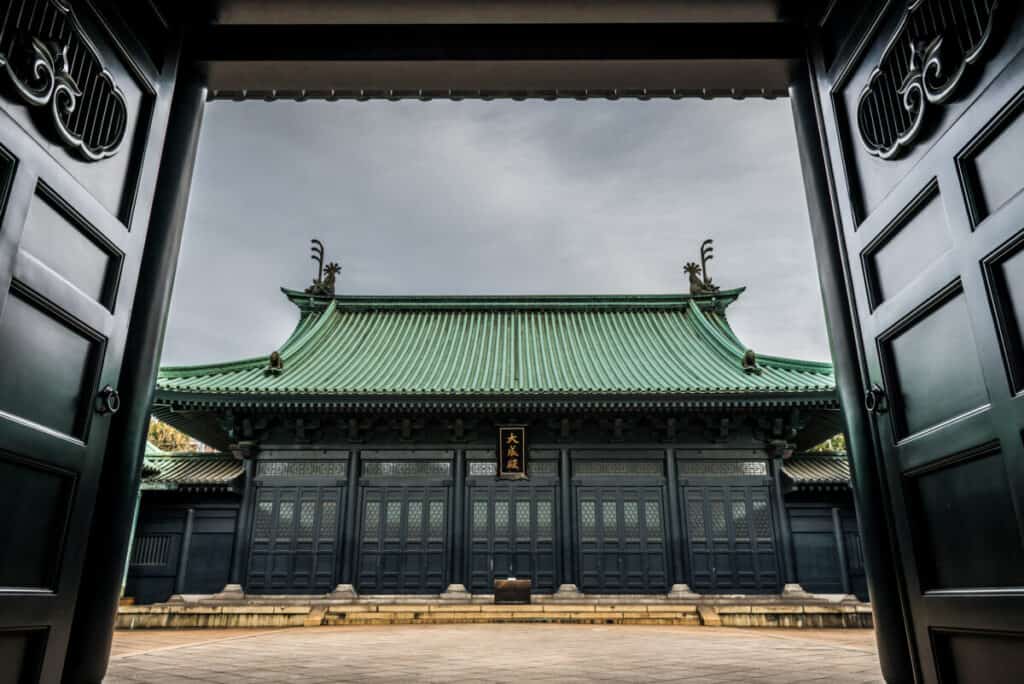
Confucianism emphasizes people’s potential to improve through effort. Yushima Seido is an essential historical institution since this intellectual immigration from mainland China deeply affected Japanese thought, attitudes, and morality.
Yushima Seido’s duty is to emphasize the significance of Chinese history and culture in present Japanese society.










